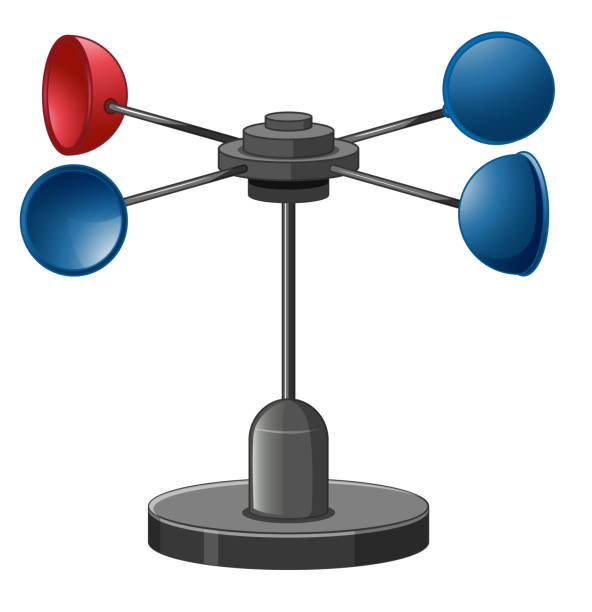Leading Functions to Seek in an Effective Anemometer for Accurate Wind Measurement
Leading Functions to Seek in an Effective Anemometer for Accurate Wind Measurement
Blog Article
Anemometers Revealed: Recognizing Their Value in Ecological Monitoring and Safety Measures
The function of anemometers in ecological tracking and safety actions is often ignored, yet their importance is undeniable. From weather forecasting to aviation safety and security, anemometers play a vital function in giving accurate data that informs decision-making procedures and improves total security.
Background of Anemometers
The advancement of anemometers can be traced back to the old people where fundamental wind measuring tools were initial made use of. One of the earliest known anemometers was the hemispherical cup anemometer developed by Leon Battista Alberti in the 15th century.
Over the years, developments in technology led to the development of more contemporary anemometers, including ultrasonic anemometers and laser Doppler anemometers, supplying boosted accuracy and performance in determining wind rate and instructions. The history of anemometers showcases a remarkable journey of advancement and development in the field of meteorology.
Sorts Of Anemometers
Throughout the area of weather forecasting, numerous sorts of anemometers have actually been created to accurately determine wind speed and instructions. One of the most usual kind is the cup anemometer, which contains 3 or 4 cups placed on horizontal arms that turn with the wind. As the mugs spin, the speed at which they turn is directly proportional to the wind rate. One more extensively utilized kind is the vane anemometer, which features a tail or fin that aligns itself with the wind instructions. This placement allows the tool to figure out the wind instructions. Sonic anemometers utilize ultrasonic signals to gauge wind rate and instructions properly. They are typically utilized in research study applications because of their high accuracy. Hot-wire anemometers operate based upon the principle that the cooling effect of wind on a heated wire is symmetrical to the wind rate. These anemometers appropriate for measuring reduced wind speeds with high accuracy. Each kind of anemometer has its toughness and is selected based upon the particular needs of the monitoring job at hand.
Applications in Meteorology
Having actually gone over the various kinds of anemometers made use of in meteorology for determining wind speed and direction, it is necessary to explore their sensible applications in the area. Anemometers play an essential duty in weather forecasting by offering precise and real-time data on wind conditions (anemometer). Meteorologists utilize anemometers to monitor wind speed and instructions to forecast weather patterns, problem warnings for severe weather occasions like tornados, storms, and twisters, and evaluate weather for aviation safety and security
In weather forecasting, anemometers assist in recognizing regional and local wind patterns, which are vital for forecasting climate adjustments and establishing weather patterns. These devices are additionally utilized in research study to study microclimates, city warmth islands, and air contamination dispersion. In addition, anemometers are utilized in agriculture to maximize plant management methods, such as irrigation and pesticide application, based on wind problems.
Relevance in Air Travel Safety And Security
An indispensable element of making sure aviation safety and security exists in the meticulous surveillance of wind conditions making use of anemometers. Anemometers play an essential duty in air travel by offering real-time information on wind speed and instructions, aiding pilots in making educated choices throughout flight, take-off, and touchdown. Uncertain and strong winds can substantially impact aircraft procedures, making it crucial for aeronautics authorities to count on accurate wind measurements to make certain the security of guests and staff.

In the vibrant atmosphere of aeronautics, where also small modifications in you could try these out wind rate and direction can have extensive effects, anemometers stand as essential tools for advertising risk-free and safe and secure air travel.
Role in Environmental Study
Anemometers play a vital duty in ecological study by providing crucial data on wind speed and direction. By accurately measuring wind qualities, anemometers assist scientists analyze the movement of contaminants in the air, analyze the effect of commercial emissions, and predict the spread of contaminants in the environment.


Verdict
Finally, anemometers have actually played an important function in environmental monitoring and precaution. With an abundant background and different types available, these tools have been commonly utilized in weather forecasting, aeronautics security, and ecological research. Comprehending the importance of anemometers is necessary for precisely determining wind rate and instructions, which is crucial for anticipating weather patterns, guaranteeing safe aviation procedures, and performing environmental studies - anemometer. Their payments to these areas can not be ignored.
One of the earliest well-known anemometers was the hemispherical cup anemometer designed by Leon Battista Alberti in the 15th century. Over the years, innovations in technology led to the advancement of more modern anemometers, including ultrasonic anemometers and laser Doppler anemometers, using boosted precision and performance in determining wind speed and instructions. Hot-wire anemometers operate based on the principle that the cooling result of wind on a heated cable is symmetrical to the wind speed. Meteorologists utilize anemometers to keep track of wind rate and instructions to forecast climate patterns, issue cautions for serious climate events like typhoons, tornados, and hurricanes, and examine atmospheric conditions for air travel safety and security.
Understanding the importance of anemometers is important for accurately determining wind speed and instructions, which is essential for forecasting weather patterns, guaranteeing secure aeronautics procedures, and published here conducting ecological studies. (anemometer)
Report this page